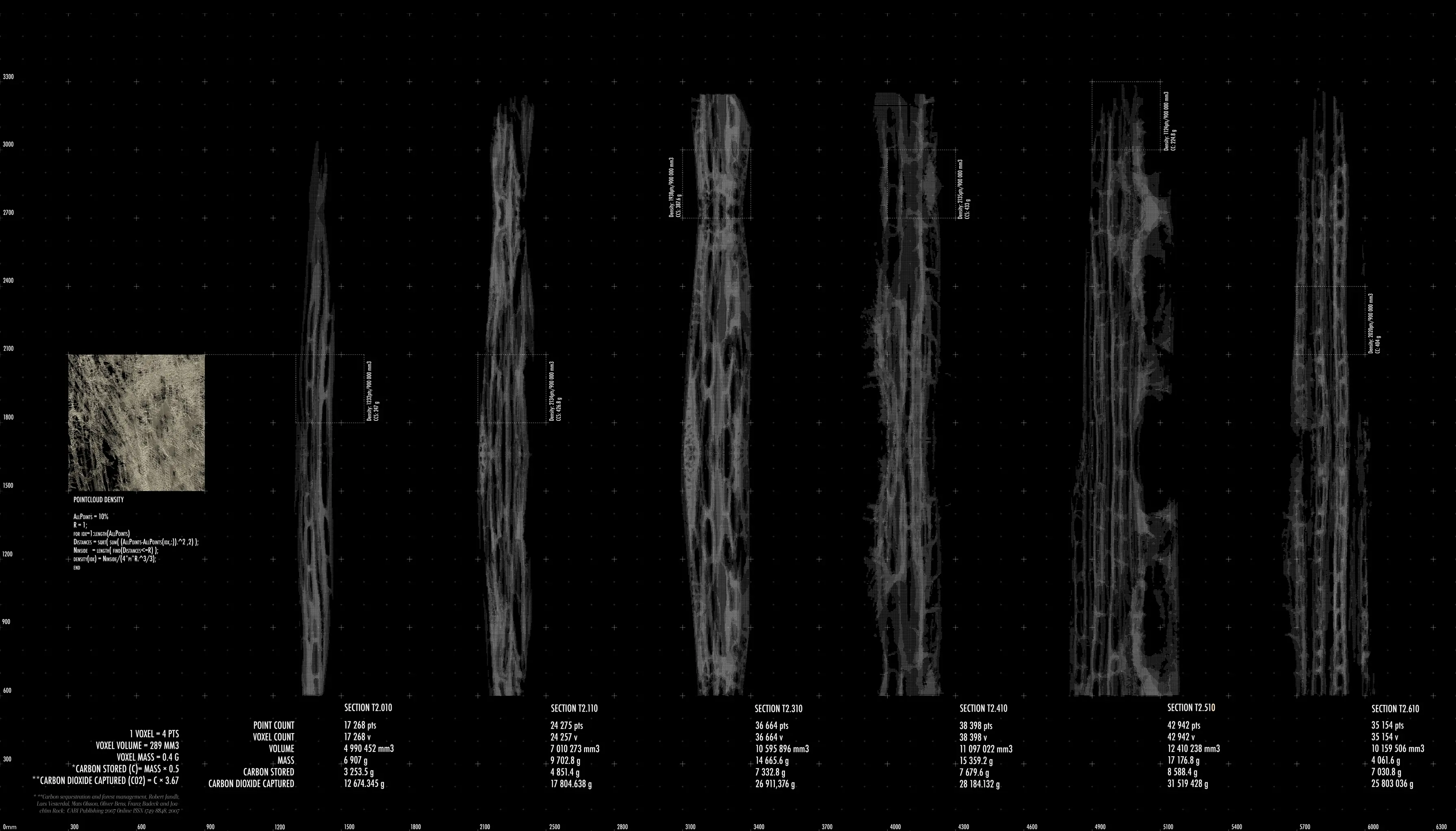ARBOR
Iteration 01
ARBOR is the first iteration of a cyborganic living object, exhibited at Potenziale (AUT, Innsbruck). It is a bio-artificial system grown through intelligent technologies—an organism that lives both biologically and technologically, proposing a regenerative life cycle for timber. The project explores ways to read and reimagine the intelligence embedded in organic wood structures through machine learning, merging biological logic with digital form.
By analysing the microscopic anatomy of wood, ARBOR draws from its inherent complexity—adaptive responses, anisotropic behaviour, and internal gradation. These features, often seen as limitations, are reconsidered as assets for designing responsive, artificially alive systems. A large dataset from the ArchiWood project, including over 900 species imaged in three anatomical cuts, formed the research base.
StyleGAN2 was employed to extract material principles from the dataset and inform a volumetric model through latent-vector interpolation. The transverse cut at x200 magnification proved most consistent, allowing the team to spatially map material behaviours such as fibre density gradients, stiffness variation, and hydrophilic patterns. This informed the morphology of ARBOR and its hybrid, anisotropic structure.
Fabrication was carried out through large-scale 3D printing. Two material systems were tested: a filament made of 40% wood and recycled PLA, and a 99% wood paste bound with agar-agar. Sawdust sourced from Tyrol was refined and printed using a custom toolhead. The PLA-based filament was selected for rapid prototyping the final piece, while the water-based system was used for small-scale elements.
Combining robotic manufacturing, machine learning, and regenerative material cycles, ARBOR proposes a scenario where wooden structures are not simply constructed—but cultivated as cyborganic entities, continuously interacting with and adapting to their environment.









Project by
Research Supervisor
Support Team
External Advisor
Support
Institute of Urban Design at the University of Innsbruck.